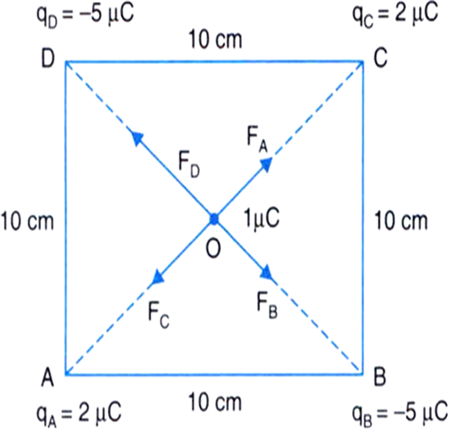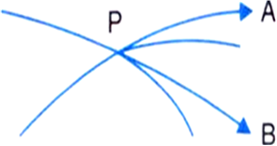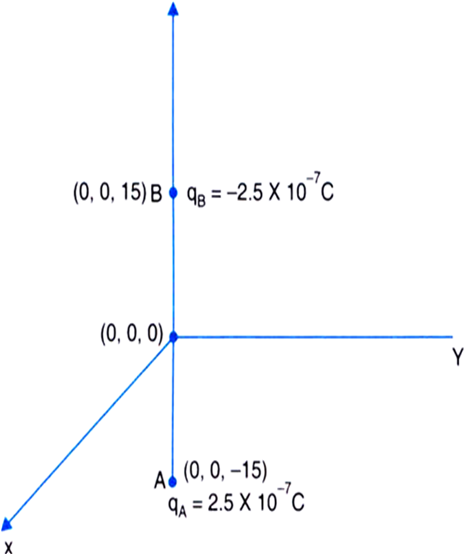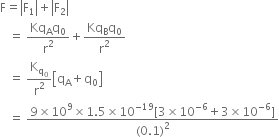



Hence, two field lines never cross each other.

Two point charges qA = 3 μC and qB = –3 μC are located 20 cm apart in vacuum.
(a) What is the electric field at the midpoint O of the line AB joining the two charges?
(b) If a negative test charge of magnitude 1.5 x 10–9 C is placed at this point, what is the force experienced by the test charge?
![]()
and ![]()
(a)
![]()
Let us assume that a unit positive test charge is placed at 0. qA will repel this test charge while qB will attract. Hence, ![]() both are directed towards
both are directed towards ![]()
![]()
![]()
![]()

(b) As a negative test charge of q0 = – 1.5 x 10–6 C is placed at 0. qA will attract it while qB will repel. Therefore, the net force



